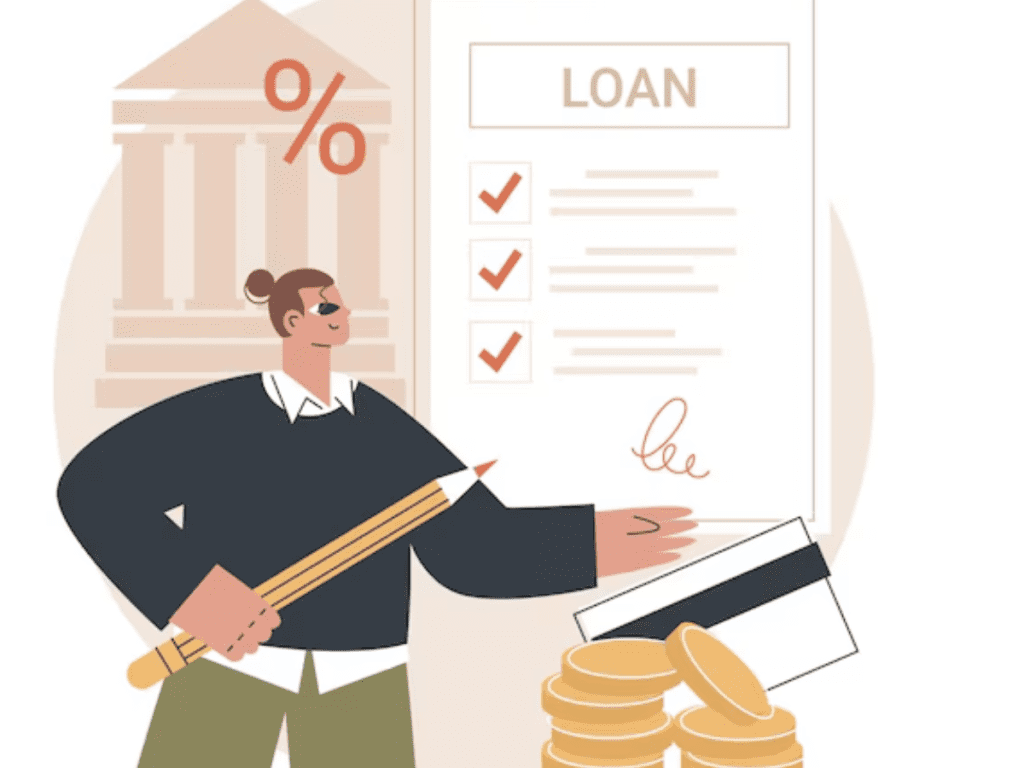Introdcution
Personal loans are usually a necessary financial instrument that individuals utilize to finance a range of needs. Whether it is to cover medical bills, home maintenance, debt consolidation, or other major life expenses, loans can be a source of financial relief. Yet, one of the biggest issues involved with borrowing cash is the interest rate since it dictates how much extra you end up paying over the amount that you borrowed initially. A high interest rate will lead to a greater burden in the long term, raising your monthly payment and the amount that you end up paying back. For individuals who want to reduce the cost of borrowing, finding a low-interest personal loan is essential.
A low-interest personal loan provides an inexpensive alternative to other borrowing options like credit cards or payday loans. Throughout this guide, we are going to cover everything you need to understand about low-interest personal loans, where to get them, and how to qualify for the most beneficial terms. At the conclusion of this article, you will understand how to obtain a loan with good terms that fit your financial resources.
Understanding Low-Interest Personal Loans
A low-interest personal loan refers to a loan where the interest charged on the principal amount is relatively low compared to other types of loans. The interest rate can vary depending on various factors, such as your credit score, income, the amount you are borrowing, and the loan term. They usually have interest rates between five percent and twelve percent, but sometimes they can go lower or higher based on the lender and your economic position.
Low-interest loans are typically unsecured loans, which means they don’t ask you to provide collateral such as a house or vehicle. These loans are perfect for people who want to borrow money without putting personal property at risk. When you’re applying for a low-interest personal loan, it is important to know the cost. The objective is to minimize the amount of money you pay throughout the life of the loan by getting the best interest rate possible.
Where to Get Low-Interest Personal Loans
Obtaining a low-interest personal loan hinges mostly on how creditworthy you are, the institution, and the type of loan you want. These are some of the most prevalent places where you can access low-interest personal loans:
1. Traditional Banks
Banks are usually the first that come to mind when one considers taking a personal loan. Banks have competitive interest rates on personal loans, especially for customers who have good credit. If you already have an account with a bank or have been a customer for a long time, you can try negotiating a lower interest rate on the loan. Even some banks offer discounts or special promotions for current customers.
Advantages of Bank Loans:
- Stable institutions with a solid reputation.
- Favorable interest rates for long-term customers.
- Possibility of flexibility in terms and payment options.
Disadvantages of Bank Loans:
- Stringent requirements for qualification, such as high credit score.
- Protracted processing of loan approval.
- Excessive fees for specific services, including loan origination or prepayment fees.
2. Credit Unions
Credit unions are not-for-profit financial institutions that are more interested in serving their members than in making a profit. As a result, credit unions tend to charge lower interest rates on personal loans compared to banks. They also have less stringent eligibility criteria, meaning that even if you do not have the best credit score, you can still get a loan.
To borrow money from a credit union, you need to become a member. Becoming a member usually requires that you live in a certain area or work for a certain employer. Some find credit unions more friendly with customer service and helpfulness than large banks that are designed to make a profit.
Advantages of Credit Union Loans:
- Lower interest rates compared to regular banks.
- Fewer fees and penalties.
- Tailored service and greater flexibility in loan approval.
Disadvantages of Credit Union Loans:
- You need to be a member.
- Fewer online services than bigger banks.
- Less branch presence than national banks.
3. Online Lenders
Online lending websites have gained more popularity over the past few years. Online lending websites provide the advantage of getting a loan application done from any location with internet access. Most online lenders also provide low-interest personal loans since their operating expense is less compared to traditional banks. Some of the most popular online lenders are LendingClub, Upstart, and SoFi.
Obtaining an online loan usually entails submitting simple personal and financial details on a convenient-to-use online interface. The lender will then forward to you, after processing your application, the offer specifying interest rate, amount of loan, and repayment term. Online lenders also have a quicker application process and approval process compared to their traditional counterparts.
Advantages of Online Loans:
- Competitive interest rate.
- Quicker application process and prompt approval.
- Ease of applying from home or on the go.
Disadvantages of Online Loans:
- Could have a higher credit rating than credit unions.
- High fees or penalties by some online lenders.
- Restricted in-person customer service.
4. Peer-to-Peer (P2P) Lending
Peer-to-peer lending matches borrowers with individual lenders who are willing to provide loans. P2P lending can frequently provide lower interest rates than banks because there are fewer expenses. P2P websites, like Prosper and Funding Circle, enable borrowers to submit loan applications and have them considered by a group of investors. The better your loan profile, the more competitive offers you will likely get from investors.
Advantages of P2P Lending:
- Low-interest rates are possible.
- Convenient loan terms and fast approval.
- Variety of loan amounts and uses.
Disadvantages of P2P Lending:
- Getting a loan might take longer than going through traditional lenders.
- Not everyone will be eligible for good rates.
- Chance of being rejected if investors don’t want to finance your loan.
5. Family or Friends
Other times, the most suitable place to secure a low-interest personal loan is from family or friends. Taking a loan from close friends and family members might have minimal or no interest attached to it, thus it can be very affordable. It also tends to complicate interpersonal relationships, therefore one needs to agree on clear repayment terms and communicate about the loan in an open manner with the financier.
Advantages of Taking a Loan from Friends or Family:
- Minimal or no interest.
- Convenient repayment terms.
- Greater tolerance in the event of financial hardships.
Disadvantages of Borrowing from Family or Friends:
- Risk of damage to personal relationships if there is a problem with repayment.
- No legal recourse or formal loan contracts.
- Limited ability to borrow.
How to Qualify for a Low-Interest Personal Loan
While it is essential to find low-interest personal loans, it is also vital to know what you must do to be eligible for such loans. Lenders consider several factors when deciding if you are eligible and the interest rate you will get. The following are the primary factors that determine your eligibility for a low-interest personal loan:
1. Credit Score
Your credit score is among the most critical things that lenders consider when they set the interest rate for your loan. Typically, the higher your credit score, the better the interest rate you can get. If your credit score is 700 or higher, chances are that you will be given good terms. A healthy credit score informs lenders that you are a reliable borrower who will likely repay the loan in a timely manner.
Tip: If you have a lower credit score, you can consider improving it before you apply for a loan. Paying debts and timely payments can improve your credit score.
2. Income and Employment Stability
Lenders are interested in knowing that you have a stable income and the means to repay the loan. They will examine your income level, employment stability, and work history. A stable income gives lenders confidence that you can pay the monthly payments without incurring financial hardship.
Tip: Have documents to prove your income, like pay stubs, tax returns, or bank statements.
3. Debt-to-Income Ratio
Your debt-to-income ratio is another consideration in loan approval. It is the comparison of your monthly debt payments and monthly income that provides lenders with the information about how much more debt you can afford. A lower DTI ratio is desirable because it means you have more space in your budget to accommodate a new loan.
Tip: If your DTI ratio is large, pay down some of the existing debts ahead of time to enhance your odds of qualifying for favorable terms on a loan.
4. Collateral (for Secured Loans)
If you choose a secured loan, providing collateral can reduce the interest rate. Collateral, like a vehicle or real estate, gives the lender a security interest in the event that you cannot repay the loan. Since secured loans pose less risk to the lender, they are frequently provided at lower interest rates than unsecured loans.
Tip: Use an asset you feel okay about putting up for collateral if it will get you a better loan rate.
5. Loan Amount and Term
How much you borrow and how long you borrow for can influence your interest rate. For example, generally shorter loan terms will have lower interest rates because the risk to the lender is less. Borrowing a smaller amount may also cost less, as it is less risky for the lender.
Tip: Where possible, choose a loan period that matches your repayment ability without unnecessarily prolonging the loan. Shorter periods can save you interest in the long term.
Tips for Getting the Best Deal on a Low-Interest Personal Loan
Although obtaining the most ideal loan matters, having the best offer encompasses more than only receiving a favorable interest rate. Consider these techniques to achieve the most optimal terms for your loan:
1. Compare Several Lenders
Several lenders charge varied interest rates, conditions, and charges, which is why comparing quotes from multiple lenders is a necessity. Make use of web comparison platforms in order to consider different loans and obtain the most optimal offer.
2. Negotiate Terms
When you have locked in an offer, don’t be afraid to negotiate with the lender for more favorable terms. If you’ve got a healthy credit history, you can probably ask for a reduced interest rate or more favorable repayment terms.
3. Read the Fine Print
Make sure you know all the charges and conditions of the loan before signing the contract. Check for any additional fees, prepayment penalties, or conditions that may raise the overall cost of borrowing.
4. Think About Loan Features
There are some loans that have extras attached to them, like deferment of payment or prepaying the loan without charges. These options are an added advantage to your loan other than the interest rate.
Conclusion
Obtaining a low-interest personal loan helps minimize the economic weight of taking money on loan. By looking at different loan alternatives, comparing interest rates, and qualifying on your credit worthiness, you can make sure that you are obtaining the most favorable terms. Whether you are borrowing from a bank, credit union, or online lender, knowing how to shop the loan process and what determines interest rates will enable you to make a wise choice. By borrowing judiciously, you can utilize personal loans as a powerful financial management tool and a means to reach your objectives.

